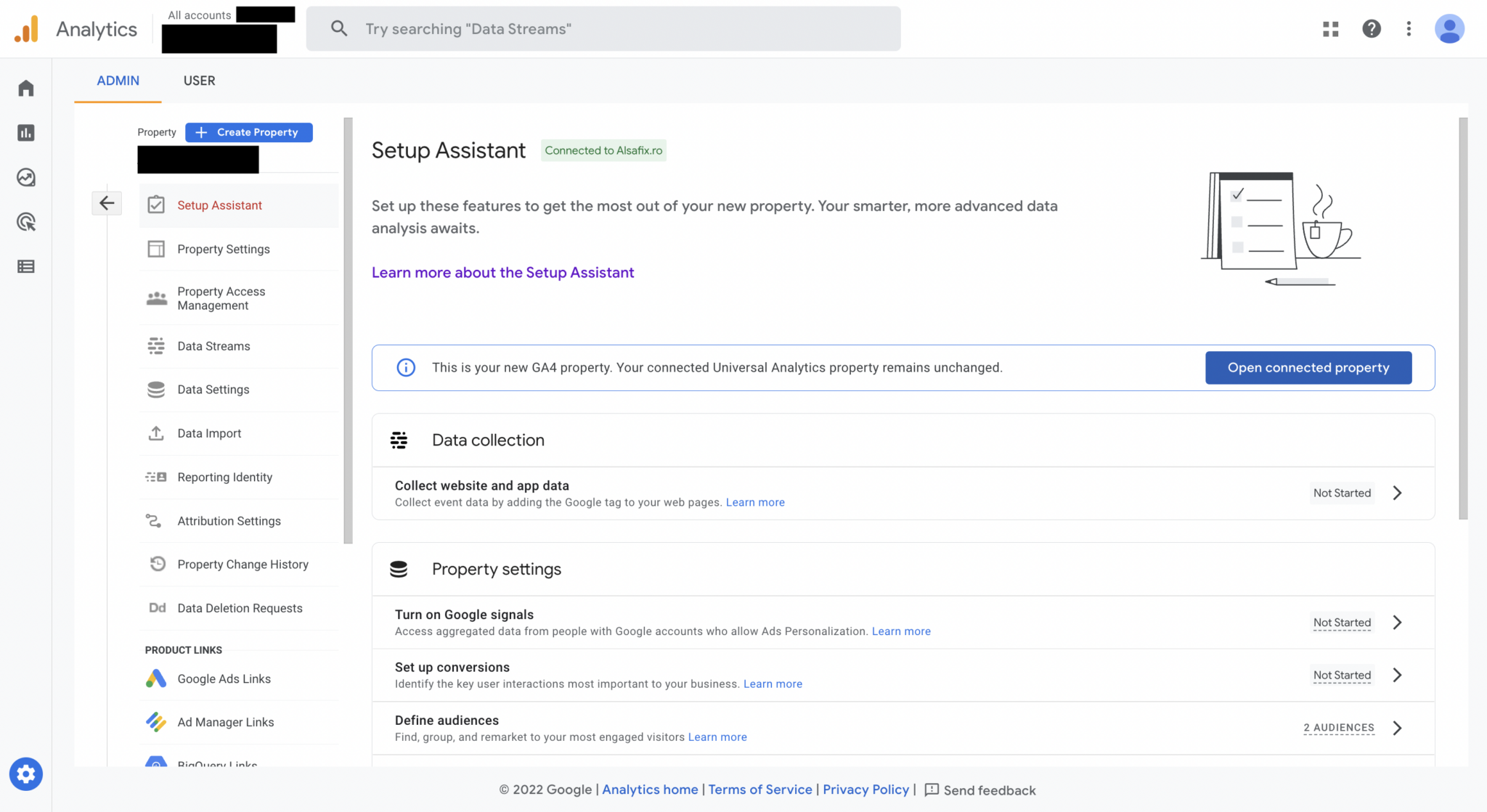Google Analytics 4 (GA4) Agency
More data for better decisions with GA4
- More insights into your online marketing with GA4
- Higher ROAS through better data analysis
- GA4 consulting & training


Google Analytics 4 (GA4) Agency
Our services as a Google Analytics 4 Agency
- Transition to Google Analytics 4
- Training courses on Google Analytics 4
- Set up of relevant events
- Tracking with Google Tag Manager
- Visualization with Google Data Studio
- Analytics 4 audit & setup
- General recommendations on Analytics 4
Make an appointment
Initial consultation




Frequently Asked Questions
Short answers to your questions
Who is behind SaphirSolution?
Since its founding in 2012, SaphirSolution has grown steadily. We are currently a team of 60 people spread across two countries with plans for further expansion in Europe. We provide multiple performance marketing services to small companies and big corporations.
Which projects are you particularly proud of?
Here at SaphirSolution, we are proud of all our projects, small and big.
We support a variety of clients: startups that just started and want to scale up and grow, established companies that want to digitalize their marketing, and big players such as Volvo, Polestar or Peugeot that want to optimize their digital marketing performance.
What services does SaphirSolution offer?
We are a full-service performance marketing agency.
We offer assistance throughout the entire customer journey: from concept, to building a website, to running marketing campaigns, to increasing sales and leads.
Our services include: SEO, paid ads (search, social media), social media management, affiliate marketing, web development, web analytics, marketplace optimization.
Our teams work together on identifying problems and developing solutions not only within their own field of work but also in other marketing channels. We build up synergies between departments.
What does a collaboration with SaphirSolution look like?
We consider ourselves your partner, an extended arm of your marketing department. Much more than a client – service provider relationship.
We offer you support wherever and whenever is needed. Here our full-service approach becomes important as we have specialists for every online marketing field in our team.
Our goal is for you to focus on the strategy and growth of your company and outsource operational tasks to us. Together, we set up the correct online marketing strategy for you.
Google Analytics development
In 1998 the first tracking version of Urchin was developed. In 2005, Google acquired Urchin and made Google Analytics available for free. This has revolutionized the web analysis world and ensured wide distribution. Currently, Google Analytics has a market share of over 80% in Germany.
Further upgrades followed up to the current Universal Analytics, which is now called GA3. However, these were upgrades to the original Urchin technology, which is now very old. A few Urchin relics can still be found today, e.g., the UTM parameters, which you probably know. UTM parameters are used to build campaign landing pages. UTM is the abbreviation for Urchin Tracking Module.
In 2014, Firebase was added to track apps. Building on this new technology, GA App+Web was developed in 2019 so that apps and websites could be measured using the same technology. In 2020, it became standard with GA4. Due to its fast implementation, some features can still be improved. GA4 looks to the future even if it’s at the beginning.
Google Analytics 4 – What can the new technology do?
Probably the most important change in the new data model is that user activities on the website are recorded via data streams and measured with events. The new data model brings completely new data and reports. By incorporating machine learning technology, Google can calculate new predictive metrics.
This was intended in order to fill in data gaps. It is necessary to completely rethink data evaluations and adapt to the new calculation model. Do not try to force the data into the current structures. You need to rethink and adapt to the new technology.
Google Analytics 4 – A new data model
With the new data model, the focus is on the user. All user activities are recorded as events.
For example, a page view in GA3 is counted as a “hit”, in GA4 it is an event.
GA4 has a flat data model. The tracking structure is no longer based on sessions, as before, but on the user as a whole. All the counts happen on one level with events.
Certain standard events are automatically counted without extra tracking setup, such as scroll tracking or clicks on external links. Here you can see a list of the current standard events.
Nevertheless, the basic count is not sufficient to conduct an analysis. It is not enough to know the total number of all page_views. It is rather interesting to know which pages are viewed.
There is further information, which is supplied as parameters, for a fine distinction between the individual events. For the page_view event you can see the various suitable parameters and values. Select the event page_view with the parameter page_location (this is the URL) and get the individual pages displayed as parameter values.
It is a completely different calculation model compared to GA3. You will no longer find the page evaluation used by GA3.
Google Analytics 4 and Google Tag Manager
It should be pointed out that Google Tag Manager is still used in GA4. It is not possible to simply adopt the tags set up by GA3, instead new tags must be defined for the new data model.
Google Analytics 4 Reports vs. UA/GA3 Reports
New Data – New Reports – New User Interface.
A direct comparison with the well-known GA3 is not possible. Here is an overview of the current standard reports in GA3.
Google has tried to provide ready-to-use reports for all possible use cases. However, the great amount was overwhelming for many users. This is a list of standard reports in GA4. Compared to GA3, it was significantly reduced because the standard reports only show simple standard events at first.
For answers to specific questions, you have to enrich and skillfully combine events with parameter names and parameter values, as shown in the above example ‘’page_view’’. Therefore, the analysis area, which was marked here, will play a central role as in this area you can compile your own analyses.
You can imagine it like you are at IKEA. The individual parts are on shelves in different aisles. You have to put the individual parts together in order to assemble them into a closet. In order to do so, you have to know which parts you need and where the individual parts are located. And just like at IKEA, there are different ways to equip the closet. Furthermore, there are various hurdles to overcome when setting it up correctly. The more often you’ve done this, the better it works.
What services we offer when migrating to Google Analytics 4:
- Migration from Universal Analytics to Google Analytics 4
- Extension of the previous Google Tag Manager setup with new Google Analytics 4 tags and triggers
- Checking your cookie consent banner for functionality
- Enhanced ecommerce tracking in order to still have the purchase behavior and checkout funnel available
- Use of our SaSo shop dashboard in order for you to have all important KPIs at a glance
- Setup of your GA4 Property
- Definition of custom dimensions to be able to evaluate parameters
- General tracking advice
- Workshops
Why should you switch to GA4 now?
From 1 July 2023, the previously well-known Universal Analytics will no longer receive any data.
Without web analytics, you cannot get important insights to achieve your business goals. You can’t measure success or compare campaigns.
Valid and meaningful data are the basis for a successful digital strategy.
Can data be transferred from Universal Analytics to GA4?
No data can be transferred from Universal Analytics to Google Analytics 4.
When should you migrate to GA4?
Since data collection in Universal Analytics is being phased out, you should set up a new database in GA4 soon. If you now set up a GA4 property in addition to the existing Universal Analytics setup, you will already be building up 1 year of data history by the end of the data collection in UA, which you can access. The entire year of 2023 can then be evaluated in one tool.
The parallel use of Universal Analytics and Google Analytics gives you enough time to familiarize yourself with the new tool and the new type of data collection and to gain experience. The transition will be as stress-free as possible.
What are the main differences between Universal Analytics and Google Analytics 4?
GA4 is a completely new tool with a different data collection method. It has other metrics and other dimensions.
- Flat data model / no hierarchical data collection: all data is recorded as events at one level.
- The calculation of the measured values is fundamentally different. There are many new metrics, e.g., engagement rate. Nevertheless, there are no other measurements at all.
- There are no more goals, only conversions based on events.
- To collect e-commerce data, the dataLayer must be redefined using Google Tag Manager, since the previously determined data can no longer be read by the new tool.
Are there other challenges in switching to Google Analytics 4?
- User interface and reports are not comparable. The new system can be compared to the IKEA principle. Universal Analytics had many ready-made reports that could be used by clicking on them. There was a great amount of pre-written reports. With GA4, the individual dimensions and metrics often have to be defined and created first and then integrated into the system. This is very difficult to do without expert knowledge.
- There are limitations in using events and parameters. Therefore, a relocation plan makes sense.
- Functionally, the cookie consent tools must take into account the user’s consent, so that even when using GA4, tracking only takes place after active consent.
Our recommendation to ensure a smooth transition of data collection:
- Prepare for the transaction: review your current UA setup. Make sure your goals are up to date and determine what conversions you want the new GA4 to track, what information you need, what is the purpose of parameters and events.
- Get advice from our Google Analytics experts. Get help implementing Google Analytics 4.
- Treat yourself and your employees to a training course or workshop to better understand the new tool and become more confident in data analysis.
- Have a report created in Google Data Studio to capture the most important data.
Migration to Google Analytics 4 – step-by-step guide
You have probably seen the notice bar as soon as you view your existing Universal Analytics account.

There you will find the information that from 1 July 1 2023, no new data will be processed in Universal Analytics. At the same time, you will be offered assistance with the migration to GA4.
Below you will find a step-by-step guide to create a GA4 property.
Setup of GA4 Property in an existing account
For existing accounts, you have the option to create a new GA4 property using the GA4 Setup Assistant. The previous Universal Analytics property is maintained, and the two properties are linked.
The setup assistant is located at the top of the administration area for the existing property.
When you click on “Start now” the setup assistant will open.

A popup will open to create a new Google Analytics 4 property.
When you click on “Create property”, a new GA4 property is created and linked to the existing Universal Analytics property without changing it.

The data stream for Google Analytics 4 is created.
This is the basis on which data can be recorded.

Clicking on “View GA4 Property” will take you back to the setup assistant.

In the “Data Streams” section

You will find the stream URL, the name of the stream and the measurement ID by clicking on the right arrow. You need this to set up a base tag in Google Tag Manager.
In the “Optimized Analytics” section, you can see which interactions and content are automatically recorded on your website by default, without you having to do any technical setup.

In order for data to actually converge, GA4 has to be integrated into the website or shop. The easiest way to do this is with the help of Google Tag Manager, especially if a Google Tag Manager container already exists.
Create Basic Analytics 4 Tag in Google Tag Manager
You must create the base tag in Google Tag Manager.
FYI: You can also integrate the new GA4 property directly on the website with the gtag.js tracking code, but this is not recommended.
We’ll save the information on how to create a Google Tag Manager account here.
Click on “New Tag”, select tag type – Google Analytics: GA4 Configuration and enter the measurement ID of your previously created GA4 property in Google Analytics.

You can find this under “Details of the web data stream” if you click on the previously created stream under data streams.
Your finished GA4 Basic Tag will look like this:

Remember to go live with the new GTM version.
Once you have created (and published) the Google Analytics property with the data stream and tag in Google Tag Manager, data will be collected in the new GA4 property.
You should now be able to see the first data in real time within a short time.
Creating of a new GA account and a new Google Analytics 4 property
If you create a new Google Analytics account, a GA4 property will now be set up by default.
If you also want to create a UA property, you can find it under “Advanced options”. Here you also have the option of creating only one Universal Analytics property.
Open your Google Analytics account and click Create Account if you don’t already have an account. Or create a new property.

Company information does not need to be filled in. However, you must agree to the Google Analytics Terms of Service and the Data Processing Terms between Controllers for Google’s measurement services. Please take some time and read them.
Once you have given your consent, you will be shown the details of the web stream.
The rest of the setup is as described above.
Next Steps
With Google Analytics 4, you can ensure that data on users and events such as page views, clicks on external links, and user engagement are captured. This gives you a basic understanding of how your visitors are interacting with your site, and can help you identify areas for improvement.
The next steps are:
- Creating custom events
- Setting up custom dimensions and metrics
- Setting up conversions
- Setting up ecommerce tracking
- Defining audiences
- Exclude referrals from pay websites
- Setting up internal site search
Here's what our customers say about us
… and you can count on it!













